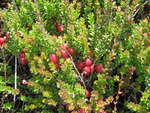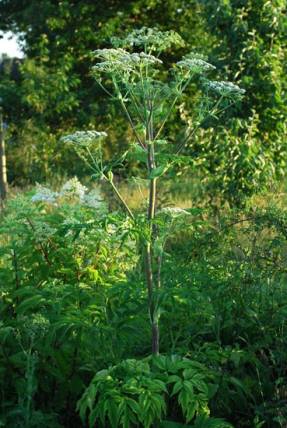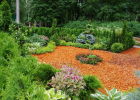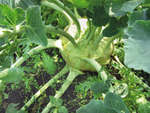At Christmas in Germany, it is worth going not only to Dresden for the Dresden Christmas stollen (see Dresden stollen, or the taste of real Christmas), but also to Nuremberg - for the traditional Christmas gingerbread Lebkuchen (Nürnberger Lebkuchen), also called Elisenlebkuchen ).

Mmm, how it smells, this world famous lebkuchen! Magic spicy, with cinnamon and cardamom, coriander, ginger and vanilla at the same time! Nuremberg Christmas gingerbread is so famous all over the world that students from all over the world sign up for aromatic baking lessons in Nuremberg, which traditionally take place in this German city every year before Christmas ... 5 years in advance! And all in order to learn how to cook traditional German Christmas dishes on your own and, of course, the Nuremberg Lebkuchen!
Historians have different opinions about the origins of the name of this delicacy "Lebkuchen". There is a version that it comes from the old German word "lebbe" (very sweet) or from the Latin word "libum" (pastries). Or maybe it comes from the word "Lebenskuchen", which means "pie of life", because of the healing properties of spices in the composition of the gingerbread. Or perhaps - from the Latin term "libum", meaning "sacrificial flat cake."

The history of the fragrant German gingerbread
The Lebkuchen story begins with Honigkuchen (Honey Pie). About 1500 BC. the ancient Egyptians baked honey cakes to place in the sarcophagi of their kings. The Egyptians believed that honey was a gift from the gods. The ancient Romans baked their own honey cakes and called them “sweet bread”. They not only used honey as a sweetener in the dough, but they also glazed the cakes with honey.
It is believed that the first recipe for a fragrant gingerbread arrived in Germany from Belgium through the city of Aachen, where it was later mastered by Franconian monasteries. It was the monks who created the first Lebkuchen forms, many of which are still in use today. Originally named "Pfefferkuchen", this gingerbread was first mentioned in the city of Ulm in 1296. Later, in 1395, "Pfefferkuchen" were mentioned in documents in the city of Nuremberg, where they were also baked by local monks. Gingerbread was first named "Lebkuchen" in 1409. Thus, the history of the Nuremberg Christmas Lebkuchen goes back more than 600 years.
Of course, it is no coincidence that Lebkuchen was born in Nuremberg. In the Middle Ages, the city stood not only in the center of Europe, but also at the crossroads of the main European trade routes, and in the period 1470-1530. many overseas spices were exported through it, in particular, spices from Genoa and Venice, which from Nuremberg then followed further north. Already at the beginning of the 14th century, Nuremberg acquired a trade monopoly on the sale of spices. Yes, and with "sweet gold" - honey, things were very good. The local Lorenzer forest was very rich in flowers and bees. And the Nuremberg honey gatherers had exclusive rights to collect honey in the surrounding forests. And in 1427, Nuremberg acquired the rights to the surrounding forest, the "Bee Garden of the Empire", with all its assets. But during the Middle Ages, honey remained the main sweetener in the kitchen. All this led to a sharp economic rise in Nuremberg. Hanseatic merchants and large spice traders were laughingly and contemptuously called the "pepper bag" - Pfeffersäcke. These were the richest people in the city. It is not surprising that Lebkuchen began to bake, first of all, in those cities that had well-established trade relations: Nuremberg, Ulm, Cologne and Munich. And it was Nuremberg that quickly became the center of European gingerbread production. The first recipe for Nuremberg gingerbread was discovered in a city cookbook from 1409. And since 1441, a special commission has been constantly working in the city, which checked the quality of the spices that were used to produce lebkuchens.
In 1643, the first private gingerbread baker's guild was founded in Nuremberg. The recipes for making lebkuchen, especially the exact inventory of the spices used in the recipe, were so secret that none of the gingerbread cookies were allowed to leave the city on pain of death. In 1645, the guild drew up strict rules that all commercial bakers had to follow in order to be eligible to sell their lebkuchen. Industrial production (on a machine tool) of lebkuchens began only in 1867.

Emperor Frederick III at the Week of the Cross in Nuremberg in 1487 ordered the baking of 4,000 lebkuchens with his printed portrait and distributed them to the children of the city. In memory of this historical fact, the Lebkuchen Schmidt bakery in Nuremberg still offers its famous Kaiserlein biscuits - a brown lebkuchen covered with chocolate with a portrait of Emperor Frederick.
Since the 16th century, lebkuchens have been baked on thin wafer-plates so that the dough does not stick to the baking sheet, and from that time they acquired a round or rectangular classic shape that has survived to this day.
At all times, lebkuchen was such an expensive gift that they were baked for members of the imperial assembly during meetings of the Reichstag, and in the middle of the 19th century, in honor of the arrival of the Bavarian king Maxmilian II and his wife, a pair of huge gingerbread was baked, on which was written "Greetings to our king ".
The wars of the 20th century were also reflected in the history of Lebkuchen. During World War I, baking lebkuchens was banned as an unaffordable luxury in a battle-torn country. After World War II, all of the city's historic gingerbread factories were damaged in Nuremberg. Nowadays, all of them have been restored, rebuilt, expanded and improved.
Nuremberg lebkuchens are based on honey and sugar syrup. Unlike other German Christmas pastries, they have a lot of nuts and very little or no flour, but a lot of finely ground nuts - almonds or hazelnuts. Nuremberg lebkuchens are flat cakes, mostly round in shape, covered with chocolate, white icing or not covered with anything. They are baked on a special substrate of thin white waffles. They are often decorated with whole almonds or candied fruits on top. To the taste, the "flesh" of a real lebkuchen is usually soft with the lightest crunch from chopped nuts.
Nuremberg Lebkuchens are top quality baked goods. According to the approved standard, real lebkuchens must contain at least 25% almonds, hazelnuts or walnuts, must not contain other oil crops and not more than 10% flour or 7.5% starch. The original Nuremberg Lebkuchens are produced only in Nuremberg.
The real Nuremberg lebkuchen contains honey, flour, sugar and eggs, nuts (hazelnuts, walnuts or almonds), marzipan, lemon and orange candied fruits. Anise, ginger, cardamom, coriander, mace (nutmeg), cloves, Jamaican pepper, and cinnamon are used in the baking spice mix. Lebkuchens are baked on a special basis - a thin wafer, similar to transparent paper, on which the prepared mass is spread, and then baked. Nuremberg gingerbread can be garnished with almonds or candied fruits and covered with colorful glaze.
The real gem of the Lebkuchen crown is Elisenlebkuchen or Elise's Gingerbread. According to legend, Eliza's Gingerbread was first baked in 1720. A wealthy Nuremberg merchant, who had already lost his wife to her serious illness, invented a recipe for a new type of lebkuchen for his beloved daughter Eliza, who was seriously ill. When the doctors could no longer help the dying girl, the desperate father remembered the healing properties of oriental spices and came up with a new gingerbread recipe, practically completely without flour, with only the highest quality spice ingredients. The daughter began to eat new lebkuchens every day and gradually recovered. This is how the healing gingerbread Elisa or Elisenlebkuchen appeared. And in fact, this is a very special lebkuchen: Eliza's real gingerbread consists of 25% hazelnuts, walnuts and a maximum of 10% flour.Moreover, for this type of lebkuchen, you can use only the so-called “precious oilseeds”: hazelnuts, walnuts and almonds.

Existing types of Nuremberg Lebkuchen
- Oblaten Lebkuchen Oblaten is thin waffles. Oblaten lebkuchen is a gingerbread baked on a thin waffle. Historically, this was done to prevent the dough from sticking to the surface of the baking sheet.
- Elisen Lebkuchen / Elisen Lebkuchen. This is Oblaten Lebkuchen of the highest quality. The gingerbread is baked on a paper-thin wafer and contains at least 25% almonds, hazelnuts and / or walnuts (other types of nuts are not allowed). Flour in the composition should not be more than 10%.
- Nürnberger Lebkuchen Classic lebkuchens and the most famous all over the world. They are often baked on Oblaten, and are distinguished by their light, soft texture. They often contain marzipan.
- Kaiserlein / Kaiserlen Lebkuchen. This is a lebkuchen on which a painting or portrait is painted or printed.
- Brown (Braune) Lebkuchen / Brown Lebkuchen. This type is made from honey or syrup dough. The dough is baked without Oblaten. The finished gingerbread is usually coated with sugar icing or chocolate.
- White (Weisse) Lebkuchen / White (Weisse) Lebkuchen. This species of lebkuchen gets its name from its very light color. This color is due to the large amount of whole eggs and / or egg whites in the dough. Usually this lebkuchen is garnished with almonds and / or candied lemon and orange peel.
Lebkuchens are especially popular during the Christmas period, although they are made and sold all year round. Nuremberg Lebkuchen since 1 July 1996 is a patented protected trademark for gingerbread made only in Nuremberg. It bears the special seal of the European Union, which depicts the beautiful daughter of the Nuremberg gingerbread - a symbol of the masterpiece of the Nuremberg gingerbread bakers guild for all time. Manufacturers of patented Nuremberg gingerbread (the Lambertz group with the brands Heberlein-Metzger, Weiss, Wolf, the Schmidt group with the Schmidt, Wicklein brands and numerous small handicraft industries) are located only within the city and sell gingerbread products in their own specialty stores in Nuremberg and only in authorized stores worldwide, as well as by mail by authorized companies. In addition, manufacturers of lebkuchens pay special attention to the packaging of their products - most often these are special, very beautifully designed, cans and chests for gingerbread. These original and vintage Lebkuchen containers are highly prized collectibles around the world.

Perhaps the most famous lebkuchens come from three bakeries in Nuremberg:
- Schmidt Lebkuchen is a bakery known for its simply fabulous assortment of decorative chests and gingerbread cans. The packaging here is not just a storage container, but a real piece of art. Schmidt's bakery has been baking top quality Lebkuchens in traditional ways for decades. A huge amount of their gingerbread is exported to countries in Europe, Asia and the United States.
- Fraunholz Lebkuchen is a wheat-free family bakery in Nuremberg that offers a unique range of gluten-free and vegan Lebkuchen gingerbreads.
- Wicklein lebkuchen is the oldest of the three brands, Wicklein has been baking the famous gingerbread for nearly 400 years.
Today's Lebkuchen bakers in Nuremberg are renowned worldwide for their premium baked goods, high in nuts and premium spices.

How and with what to eat lebkuchen
Like any other cookie, lebkuchen is the perfect companion for coffee or tea. But because of its slightly pungent taste and rich nutty texture, this gingerbread is perfect with a glass of good wine and a little grapes or figs. The classic option is to pair it with Glühwein, a traditional German mulled wine served at Christmas.You can create a light and delicious dessert out of lebkuchen by crumbling it over ice cream and sprinkling it with some liqueur, for example, Frangelico.
The expiry date of the lebkuchen is printed on each package. Since lebkuchen is a “long-term baked goods”, when stored properly (in a cool and protected from heat place where it has enough moisture) it retains its taste for several months. Lebkuchen Schmidt's lovely chests and cans are the perfect place to store these Christmas baked goods.

And although there are many regional variations of Christmas gingerbread in Germany, none of them can compete with the legendary Lebkuchen from the city of Nuremberg.
Nuremberg, like Dresden, also boasts its own Christmas market. The Christkindlmarkt in Nuremberg is one of the oldest and most beautiful Christmas markets in Europe. The Christmas Angel opens the famous Christkindlmarkt on the Friday before the first Sunday of Advent, and by the close of Christmas Eve, more than 2 million visitors each year have visited nearly 200 stalls and taste the famous Nuremburger sausages, legendary lebkuchens and German traditional mulled wine. And of course, they will buy many souvenirs at this famous medieval market, among the most famous are the "Nuremberg Prunes" - figurines of little people made of prunes with a nut instead of a head, and a legendary gingerbread - Nuremberg Lebkuchen.
Cooking recipes:
- Nuremberg Christmas lebkuchens with liqueur and tangerine
- Traditional Nuremberg Christmas Lebkuchen
Elisenlebkuchen German Christmas Gingerbread








